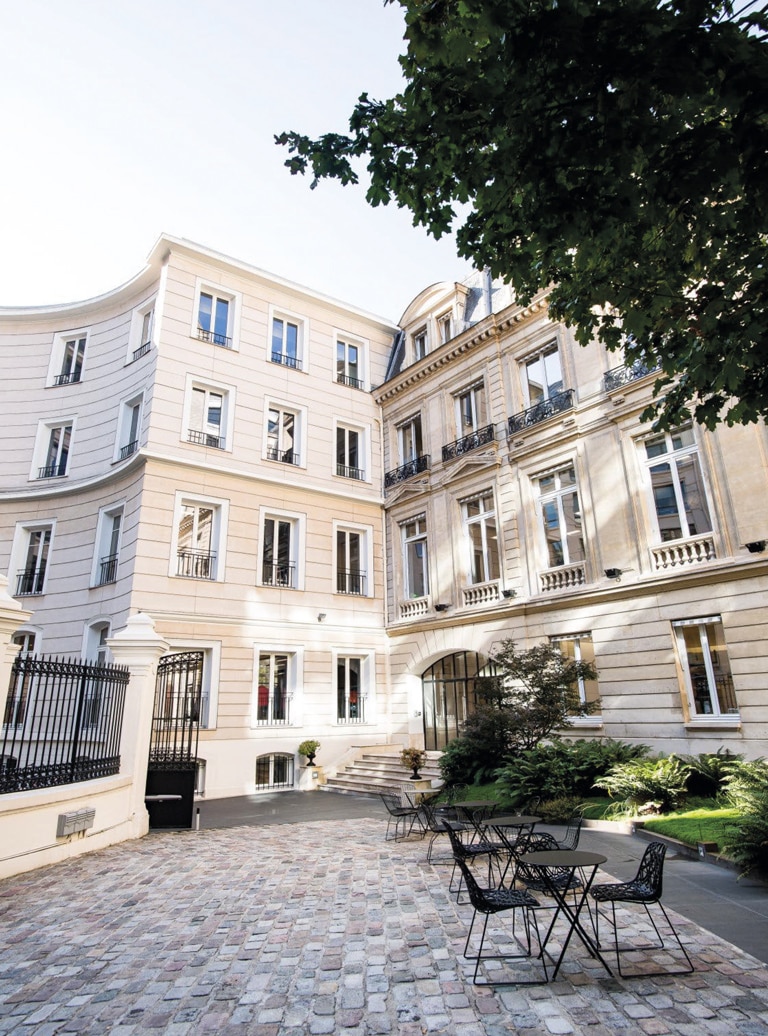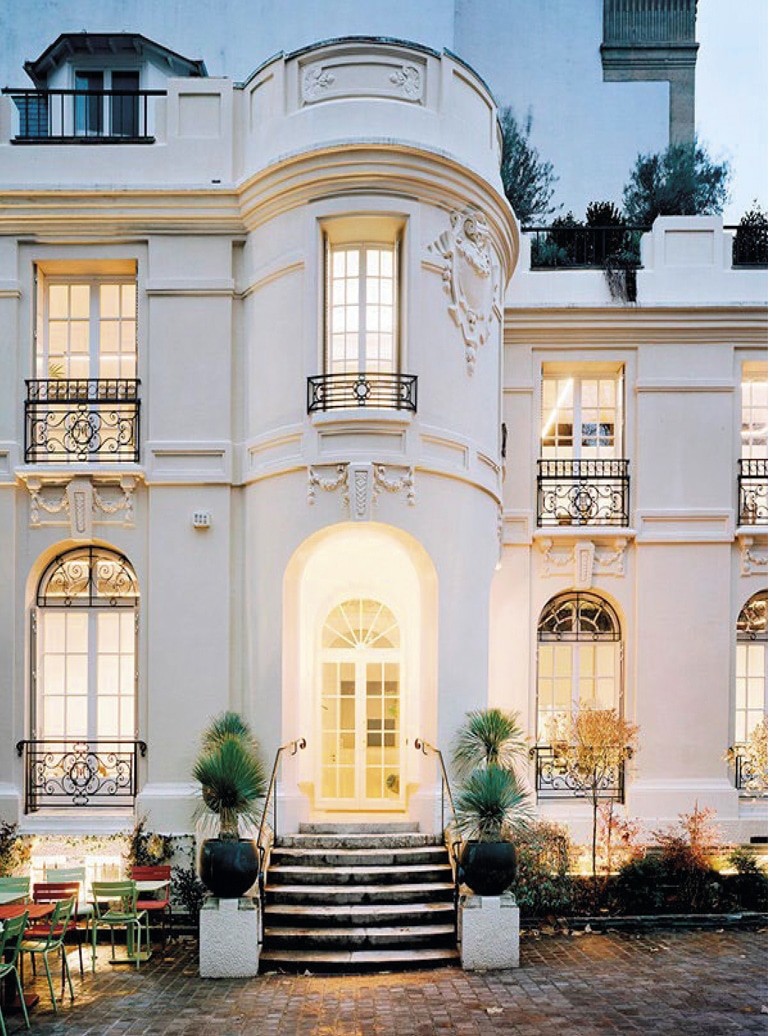TEXT DENISSE LÓPEZ | IMAGES MAPFRE
Hamburg, Paris and Brussels. These are just a few of the main European capital cities where MAPFRE has purchased buildings since 2018, when we joined forces with Swiss Life as part of a joint venture with a view to investing in the real-estate market. All the acquisitions shares similar characteristics, which reflect the company’s strategy: they are high-quality offices, located in the best areas of Europe, with prestigious tenants. In short, they represent stable investments over time. MAPFRE, like all insurance companies, has been a traditional investor in real estate assets with a view to diversifying its portfolio with higher returns than those offered by more conservative bonds.
JV MAP-SL Vittor Pisani, Milan (Italy)
250M
euros in real estate located in Germany and Spain.

Through MAPFRE Inmuebles “more than 40 years of industry know-how have been accumulated”, according to Alfredo Muñoz, general manager of this company. A strategic shift took place in 2018, however, and all investments made from that point on have been channeled through real estate funds and alongside the best international partners. This is what is known as alternative investment.
This turning point has allowed MAPFRE to diversify assets from a geographical perspective and share risks with other partners and institutional investors. The most recent case can be seen in the transfer of four high-quality buildings to an alternative mutual fund, undertaken hand in hand with MEAG, Munich Re’s asset management firm. The total volume of acquisitions comes to 250 million euros and the properties are located in Germany and Spain. It’s an investment that also includes environmental and social aspects as an integral part of its strategy, focusing on decarbonization through greater energy efficiency and a lower carbon footprint.
As part of the procedure followed for each investment, MAPFRE and an international partner (a local partner in the market it wants to access) create a real estate fund and provide significant seed capital, in some cases up to 100 million euros.
The procedure for investment is always the same. MAPFRE and an international partner (a local partner in the market it wants to access) create a real estate fund and provide significant seed capital, in some cases up to 100 million euros. From there, they allow other institutional investors in, with a target return that is even close to 4%. The initial partners’ assets (which was already in their portfolios) are incorporated within that fund, or they begin directly exploring the market to acquire buildings with that capital. “The funds set up committees where the main shareholders are represented to approve these real estate acquisitions. We analyze and visit the buildings one by one before making a decision,” explained Rafa Saiz, head of investments at MAPFRE Inmuebles. There are architects, engineers, economists and lawyers working in both MAPFRE and its partners’ teams, which allows them to carry out a comprehensive analysis of all the assets.
But it’s not only about finding the best building in the most important and central area of the city, as maintenance is also essential to retaining its value. This is why there is a technical department that determines what projects to carry out in the building. “You can’t just paint and maintain the exteriors, you have to position the asset well so that when the investment matures, normally within a period of around 10 years, it will have been revalued,” added Carlos Díaz, deputy general manager of MAPFRE Inmuebles. The renovations also include ESG (environmental, social and governance) components, since top-tier tenants demand compliance with sustainability criteria.

J.V MAP-SL Boulevard Haussmann, París (Francia)

Although the real estate sector may account for a large part of MAPFRE’s total investment in alternative assets there are other investments that have diversified the Group’s commitment to long-term profitability.
sustainable investments represent an additional commitment to pursuing more profitable alternative assets.
First steps
MAPFRE’s story of working with funds in the real-estate market began with GLL, a benchmark real estate management and investment firm in Germany formed by a joint venture between Generali and Lend Lease, which was acquired one year later by the Australian company Macquarie. This partnership was a clear win-win: MAPFRE gained access to the best real estate in different European markets, while GLL was able to raise capital from Spanish investors, thanks to MAPFRE’s appeal and the trust its brand inspires. As part of this first agreement, the decision was made to invest 300 million euros in premium offices in the main eurozone office markets within two or three years. The aim was to achieve returns of between 4% and 6% per year on a recurring basis and diversify the portfolio against other types of financial assets.
Subsequently, the Group reached an agreement in 2019 with Swiss Life for the investment of prime offices in Paris. Specifically, both partners invested a total of 296.1 million euros, split down the middle, in nine buildings across the French capital, with total office space coming to 22,000 square meters. It also strengthened its alliance with the Swiss firm by creating a joint venture (with an initial volume of assets valued at 400 million) to invest in the Spanish and Italian real estate market. The building that MAPFRE has contributed to the venture is located at 15 Calle Mateo Inurria in Madrid. In turn, companies from the Swiss Life Group contributed three properties located in Milan through its Italian fund.
With four years behind them, the overview of what each department has done, providing new resources in the area of Transactions (asset acquisitions and sales), is more than positive, to the point that investors that joined in the first fund have again put capital into later funds that were launched (95% of the capital in SIEREF I was repeated in SIEREF II), no longer needing to practice due diligence. This once again demonstrates the trust inspired by a brand that is already becoming a benchmark in other sectors, such as real estate, in this case.
as part of an agreement with Swiss Life to invest in prime office space in Paris, a total of €296.1 M were invested, in equal parts, in nine buildings in the French capital, representing a total space of 22.000 m2


In total, in just four years, nine real estate funds have been set up with Macquire, Swiss Life or Munich Re. Such is the quality that many Spanish insurance companies have decided to join as shareholders; these include Catalana Occidente, Mutualidad de la Abogacía and the Brotherhood of Architects.
in April 2021, MAPFRE reached an agreement with Iberdrola to jointly invest in renewable energies and, in this way, boost the insurance company’s commitment to the inclusion of ESG criteria in investment analyses.
Other alternative assets
Although the real estate sector may account for a large part of MAPFRE’s total investment in alternative assets (around 60%), there are other investments that have diversified the Group’s commitment to long-term profitability.
MAPFRE and Abante continued their strategic alliance in 2020 by creating an infrastructure fund with Macquarie of nearly €300 million. Considered a “fund of funds”, this product began with the purpose of giving investors access to an asset type that would allow them to diversify their portfolios. MAPFRE undertook to contribute an initial capital of 50 million euros in accordance with ESG criteria, although that figure has increased to 100 million.
Along these lines, and together with Abante and Altamar, MAPFRE launched a private equity fund in the same year (the MAPFRE Private Equity FCR)—called ‘evergreen’—with the idea of covering the needs of insurance companies and other institutional investors who have to invest in very long-term assets. What’s more, in contrast with traditional private equity funds, which have an average lifespan of around 10–12 years, this instrument has an unlimited term.
Apart from those mentioned above, these sustainable investments have represented an additional commitment by the insurance group to search for more profitable alternative assets. Specifically, in April 2021, MAPFRE reached an agreement with Iberdrola to jointly invest in renewable energies and, in this way, boosting the insurance company’s commitment to the inclusion of ESG criteria in investment analyses. This project, in which MAPFRE has an 80% stake, involves the creation of a pioneering co-investment vehicle between an energy company and an insurance company.

SIEREF I-ADA, Hamburg (Germany)




